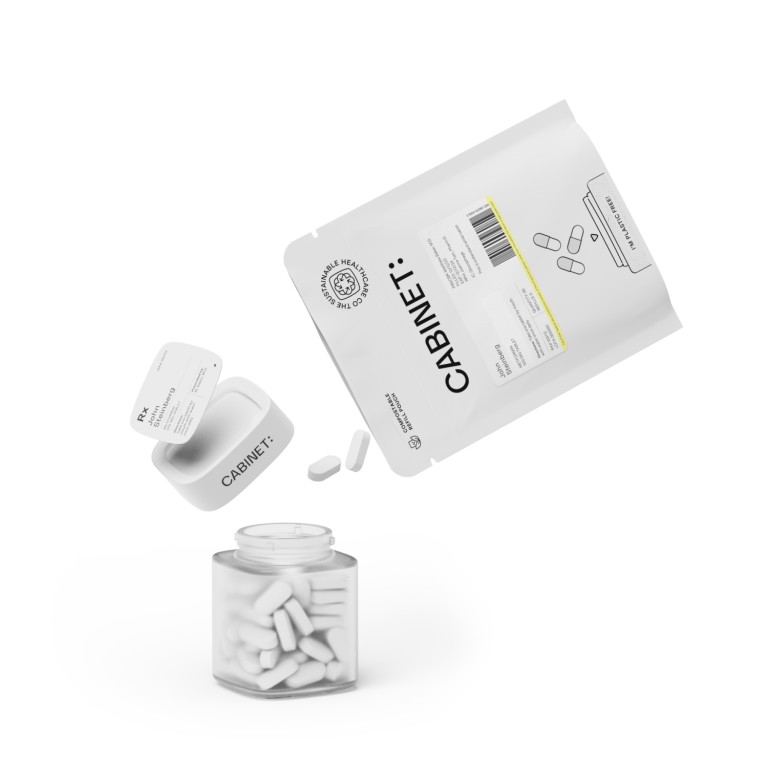Headaches are a common ailment that affect people of all ages and backgrounds. Not only can they be incredibly painful, but they can also be disruptive to daily life. So, what exactly is Headache ICD 10 and what causes it? In this article, we will explore the definition and classification of Headache ICD 10, the importance of accurate diagnosis, and the various causes that can contribute to its development.
What is Headache ICD 10?
Headache ICD 10 is a classification system used by healthcare professionals to diagnose and categorize different types of headaches. ICD 10 stands for the International Classification of Diseases, 10th Revision, which is a widely-used and internationally accepted standard for classifying and coding various medical conditions. It provides healthcare providers with a standardized way of identifying and documenting specific types of headaches.
Headaches are one of the most common medical complaints, affecting millions of people worldwide. They can range from mild discomfort to severe pain and can have a significant impact on a person's quality of life. The ICD 10 classification system helps healthcare professionals accurately diagnose and classify headaches, allowing for appropriate treatment and management strategies.
Definition and Classification
Headache ICD 10 encompasses a variety of headache disorders, including migraines, tension headaches, cluster headaches, and many others. Each type of headache is characterized by distinct symptoms and may require different treatment approaches. Migraines, for example, are often accompanied by nausea, sensitivity to light and sound, and can last for hours or even days. Tension headaches, on the other hand, are typically described as a constant, dull ache that affects both sides of the head.
By using the ICD 10 classification system, healthcare professionals can accurately identify and differentiate between these various types of headaches. This allows for targeted treatment plans that address the specific symptoms and underlying causes of each headache disorder. For example, medications that are effective for migraines may not be as effective for tension headaches, so an accurate diagnosis is crucial for providing appropriate and effective treatment.
Importance of Accurate Diagnosis
An accurate diagnosis of Headache ICD 10 is essential for several reasons. Firstly, it allows healthcare professionals to tailor the treatment plan to address the specific type of headache and its underlying causes. This personalized approach can lead to better outcomes for patients, as treatments can be targeted and more effective.
Secondly, an accurate diagnosis ensures that patients receive the appropriate medications and therapies to alleviate their symptoms effectively. For example, if a patient is diagnosed with migraines, they may be prescribed specific migraine medications, such as triptans, which target the mechanisms underlying migraines. Without an accurate diagnosis, patients may receive ineffective treatments, leading to ongoing pain and discomfort.
Finally, an accurate diagnosis enables researchers and medical professionals to collect accurate data for further understanding and advancements in headache management. By accurately classifying and documenting different types of headaches, researchers can analyze trends, identify risk factors, and develop new treatment strategies. This ongoing research is crucial for improving the overall management and care of individuals with headaches.
In conclusion, Headache ICD 10 is a classification system that plays a vital role in accurately diagnosing and categorizing different types of headaches. By using this standardized system, healthcare professionals can provide targeted treatment plans, ensure appropriate medication and therapy, and contribute to ongoing research and advancements in headache management.
Causes of Headache ICD 10
Headaches can stem from a variety of factors, and the causes of Headache ICD 10 are no exception. Let's explore some of the common triggers and underlying factors that can contribute to the development of headaches.
Genetic Factors
Research suggests that there may be a genetic predisposition to certain types of headaches. If you have a family history of migraines or other headache disorders, you may be more susceptible to developing them yourself. However, genetics alone do not guarantee that you will experience headaches – they are just one piece of the puzzle.
When it comes to genetic factors, it's important to understand that multiple genes may be involved in the development of headaches. These genes can influence various aspects of headache disorders, including their severity, frequency, and response to treatment. Scientists are still unraveling the complex interplay between genetics and headaches, hoping to gain insights that can lead to more effective treatments in the future.
Furthermore, genetic factors can interact with environmental triggers, making some individuals more vulnerable to headaches when exposed to certain stimuli. For example, someone with a genetic predisposition to migraines may be more likely to experience a headache after being exposed to bright lights or strong odors.
Environmental Triggers
Headaches can also be triggered by environmental factors such as bright lights, loud noises, strong odors, and changes in weather conditions. These triggers vary from person to person, and identifying and avoiding them can help prevent headache episodes.
Bright lights, especially fluorescent or flickering lights, can strain the eyes and trigger headaches in some individuals. Similarly, loud noises, such as construction sounds or blaring music, can create a stressful environment that contributes to headache development. Strong odors, such as perfume, chemicals, or certain foods, can also act as triggers for headaches.
Changes in weather conditions, particularly sudden shifts in temperature or changes in barometric pressure, have long been associated with the onset of headaches. Some individuals may experience migraines or tension headaches when a storm is approaching or during extreme weather conditions.
Underlying Medical Conditions
Headache ICD 10 can also be caused by underlying medical conditions such as sinus infections, dental issues, and hormonal imbalances. It is essential to identify and treat these conditions to address the root cause of the headaches and alleviate symptoms.
Sinus infections, also known as sinusitis, can cause inflammation and congestion in the sinuses, leading to headaches. The pressure and pain associated with sinus headaches can be intense and may worsen when bending over or lying down. Treating the underlying infection with antibiotics or other appropriate medications can help relieve the headaches.
Dental issues, such as temporomandibular joint disorder (TMJ), can contribute to headaches. TMJ is a condition that affects the jaw joint and muscles, causing pain and discomfort. The tension and strain in the jaw area can radiate to the head, resulting in headaches. Dentists can provide treatments and recommendations to manage TMJ-related headaches effectively.
Hormonal imbalances, particularly in women, can play a significant role in the development of headaches. Fluctuations in estrogen levels, such as those that occur during menstruation, pregnancy, or menopause, can trigger migraines or tension headaches. Understanding the hormonal patterns and seeking appropriate medical interventions can help manage these hormone-related headaches.
It's important to note that these are just a few examples of underlying medical conditions that can cause headaches. There are numerous other conditions, such as brain tumors, medication overuse, and neurological disorders, that can also contribute to headache development. Proper diagnosis and treatment by healthcare professionals are crucial in managing these conditions and alleviating associated headaches.
Recognizing the Symptoms of Headache ICD 10
Identifying the symptoms associated with Headache ICD 10 is crucial for proper diagnosis and treatment. Let's take a closer look at the physical, emotional, and psychological symptoms that commonly accompany these headaches.
Physical Symptoms
Physical symptoms of Headache ICD 10 can include throbbing pain, pressure or tightness in the head or neck, sensitivity to light and sound, and nausea or vomiting. These symptoms can vary in intensity and duration, depending on the type of headache.
Emotional and Psychological Symptoms
Headaches can also have an impact on your emotional well-being. They may cause irritability, difficulty concentrating, mood changes, and fatigue. These emotional symptoms can further exacerbate the overall impact of headaches on daily life.
Treatment Options for Headache ICD 10
Fortunately, there are several treatment options available for managing and alleviating the symptoms of Headache ICD 10. Let's explore some of the common approaches that healthcare professionals may recommend.
Medication and Drug Therapies
Medications such as pain relievers, anti-inflammatories, and triptans are often prescribed to provide relief during headache episodes. Additionally, preventive medications may be prescribed for those who experience frequent or chronic headaches. It is important to work closely with your healthcare provider to find the most effective medication and dosage for your specific needs.
Lifestyle Changes and Home Remedies
In addition to medications, lifestyle changes and home remedies can play a crucial role in managing Headache ICD 10. This may include identifying and avoiding triggers, practicing stress management techniques, maintaining a regular sleep schedule, and incorporating regular exercise into your routine.
Alternative and Complementary Therapies
Many individuals find relief from headaches through alternative and complementary therapies such as acupuncture, chiropractic care, and relaxation techniques. While the effectiveness of these therapies may vary from person to person, they can be valuable additions to a comprehensive treatment plan.
Prevention Strategies for Headache ICD 10
Preventing headaches from occurring in the first place is always preferable to treating them once they have already begun. Here are some prevention strategies to consider.
Identifying and Avoiding Triggers
One of the most effective ways to prevent headache episodes is to identify and avoid triggers. Keeping a headache diary and noting potential triggers can help you determine what factors contribute to your headaches. Once identified, you can make conscious efforts to minimize exposure to these triggers.
Regular Health Check-ups
Regular check-ups with your healthcare provider are essential for managing Headache ICD 10. These appointments allow for ongoing assessment and adjustments to your treatment plan, ensuring that it remains effective and tailored to your needs.
Stress Management Techniques
Managing stress is crucial for preventing headaches. Incorporating stress reduction techniques into your daily routine, such as deep breathing exercises, meditation, and yoga, can help minimize the frequency and intensity of headaches.
In conclusion, understanding Headache ICD 10 is essential for proper diagnosis, effective treatment, and prevention of headaches. By familiarizing yourself with the causes, symptoms, and available treatment options, you can take proactive steps towards managing your headaches and improving your overall quality of life.








